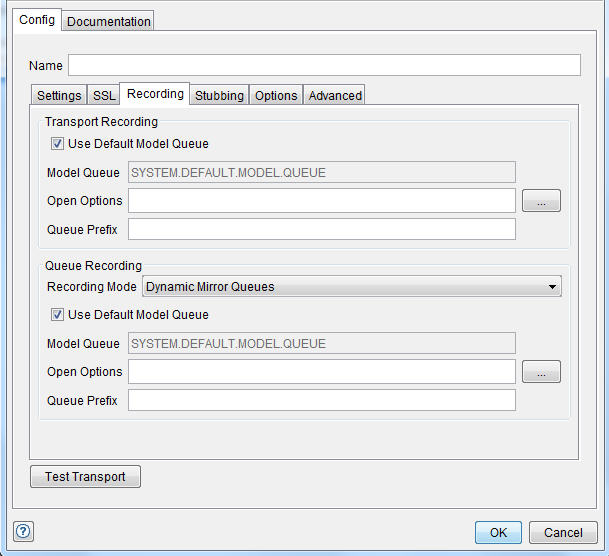IBM® Rational® Integration Tester provides
a number of ways to record WebSphere® MQ messages.
Choosing the most appropriate method depends on several factors. Some methods require the installation of more software on the WebSphere MQ queue manager server. For information about this additional software, see Installing and configuring Rational Integration Tester API exits for IBM WebSphere MQ.
Note: In Rational Integration Tester,
recording methods are configured on a per-transport basis. To record
different queues by using different methods, you have two options:
- Create multiple transports.
- Create a single transport but change the setting on that transport each time you want to change the recording method.
The following table provides guidelines for selecting recording methods in Rational Integration Tester when you are using WebSphere MQ.
| Recording Method | Description (Summary) | Advantages | Disadvantages |
|---|---|---|---|
| Queue browsing (applicable for all versions of WebSphere MQ) |
|
|
|
| Proxy queues (applicable for all versions of WebSphere MQ) |
|
|
|
| Mirror queues (applicable only to WebSphere MQ 7.0 and later) |
|
|
Note: Changes to the queue manager can require
authority to administer WebSphere MQ.
|
| Dynamic mirror queues |
|
|
Note: Changes to the queue manager can require
authority to administer WebSphere MQ.
|
| Queue aliasing (applicable only to WebSphere MQ 7.0 or later) |
|
|
|
| Record-The-Transport (applicable only to WebSphere MQ 7.0 and later) |
Note: It is especially useful when dynamic reply
queues are being used and the queue name is not known in advance.
|
|
Note: Changes to the queue manager can require
authority to administer WebSphere MQ.
|
The recording method and options used when you are capturing messages in the Recording Studio perspective can be set under the Recording tab on the physical transport.

The following options are available on this page:
| Field | Description |
|---|---|
| Use Default Model Queue | Specifies SYSTEM.DEFAULT.MODEL.QUEUE as the object from which to copy attributes. This option is selected by default. |
| Model Queue | To specify a model queue other than the default, clear the Use Default Model Queue check box and enter a queue name in this field. |
| Open Options | You can override default options when opening
model queues. By default, the field is blank, which causes the value
of 1 (MQOO_INPUT_AS_Q_DEF) to be used. To specify a different open
option:
Warning: The value entered in the Open
Options field is not validated when you click Test
Transport or OK. However, an invalid
value causes a warning message to be displayed when you start recording.
|
| Queue Prefix | Provides a custom prefix for temporary dynamic queue names. By default, the Queue Prefix field is blank and the prefix "AMQ." is used. If you enter a value in the field, it is prefixed by "AMQ." and suffixed by "." For example, if you enter "RIT" in the Queue Prefix field, the names of any temporary queues created will have the format "AMQ.RIT.*" where "*" represents a 16-character string. |
| Field | Description |
|---|---|
| Recording Mode | Select one of the following modes. Refer to Table 1 earlier in this topic for more
information.
|
| Queue Suffix | The suffix that Rational Integration Tester uses
to create unique queues and topics for the purposes of recording.
The details vary according to the recording mode. The following examples
assume a suffix of ".GH":
|
When you add an event monitor for an operation in
Recording Studio, the controls happen as follows:
- The recording approach is specified by the transport for the operation.
- The queues that are recorded are specified by the operation itself.
If reply queues are specified, suffixed versions of those queues are created.
 to select one, or
more, open options that are supported for the operation.
to select one, or
more, open options that are supported for the operation.